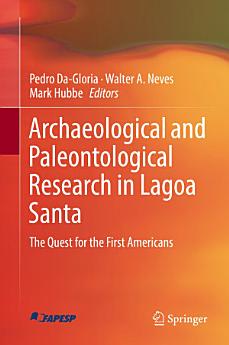Archaeological and Paleontological Research in Lagoa Santa: The Quest for the First Americans
Tietoa tästä e-kirjasta
Tietoja kirjoittajasta
Pedro Da-Gloria holds a Ph.D. in anthropology from The Ohio State University and is a researcher of the Laboratory for Human Evolutionary and Ecological Studies at the Biosciences Institute of the University of São Paulo (IB-USP). His main research focus is on the study of health and lifestyle of the early hunter-gatherers from Lagoa Santa. He also is involved in a project about the bioarchaeology of past human populations from Northern Chile, and is leading a project with rural populations from the Amazon, dedicated to create health models to be applied in living and past populations.
Walter A. Neves is full professor at the Biosciences Institute of the University of São Paulo (IB-USP), where he coordinates the Laboratory for Human Evolutionary and Ecological Studies in the Department of Genetics and Evolutionary Biology, which was the first laboratory dedicated to the study of biological anthropology in Latin America. He holds a Ph.D. in evolutionary biology from the IB-USP with post-doctoral studies at the Northwestern University, USA, and at the Department of Anthropology of the Faculty of Philosophy, Languages and Literature and Human Sciences of the University of São Paulo. Throughout his career he has contributed with many research groups in Brazil, United States, Argentina and Chile, and has developed a vast and prolific academic career in the areas of biological anthropology, prehistoric archaeology, human evolution, human ecology, and evolutionary theory. His main research focus is on the Settlement of the Americas, with a special emphasis on the study of Lagoa Santa Early Holocene hunter-gatherers. He has published over 120 articles, 12 books, 22 book chapters, and advised 20 master and 7 Ph.D. students.
Mark Hubbe is an associate professor at the Department of Anthropology of The Ohio State University. He received his degree in biological anthropology from the University of São Paulo in 2006 and has focused most of his research efforts in the study of the biological characteristics of early South American human populations. Since 2000, he participates as co-investigator of the long-term project led by Prof. Walter A. Neves to excavate new sites in the Lagoa Santa region, in Central Brazil. His research focus has been the study of morphological affinities, processes of morphological adaptation, and modern human dispersion. Most recently, he has been applying quantitative analyses to processes of morphological differentiation and modern human dispersion across the planet.




